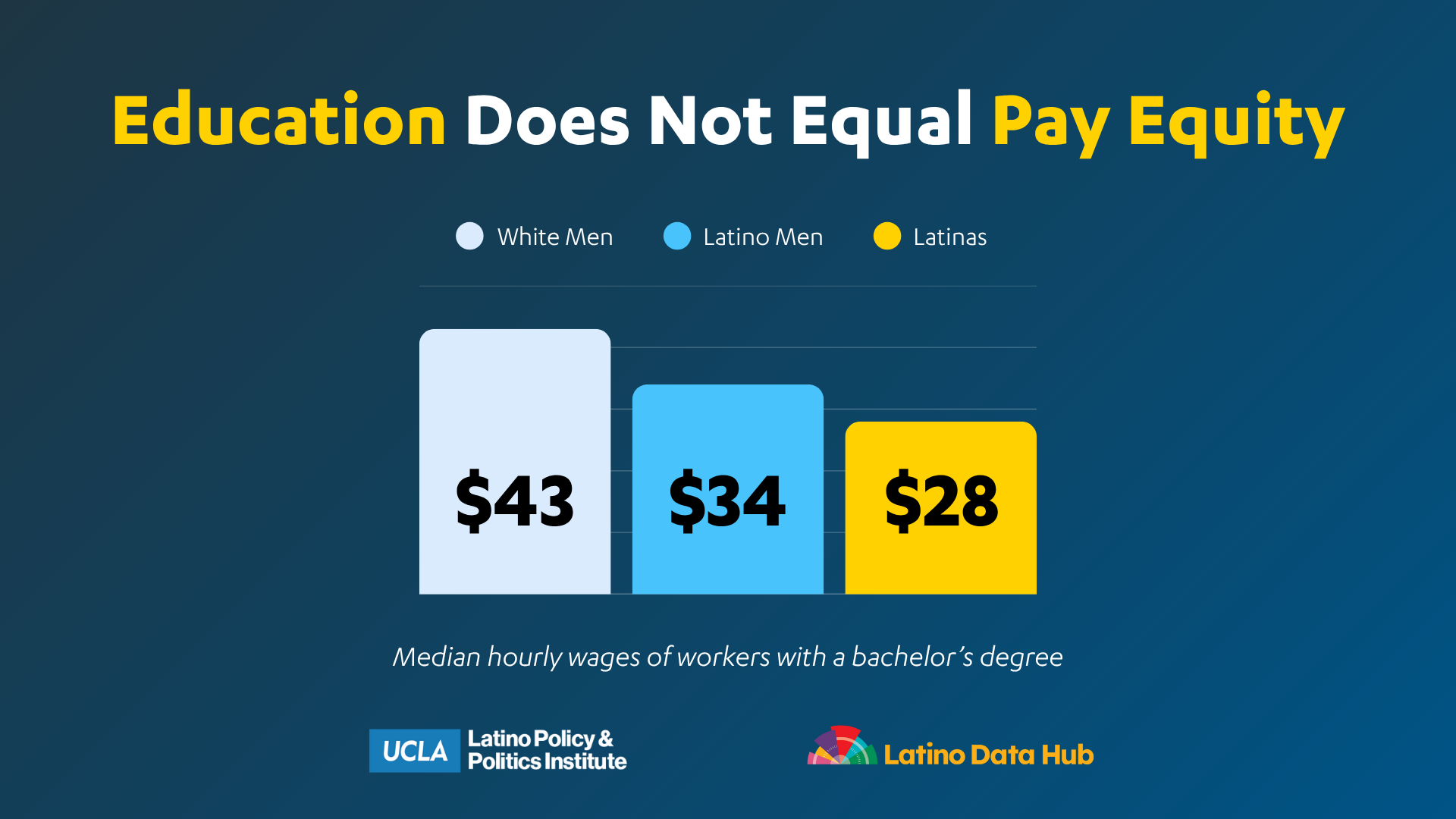Key takeaways
- The share of Latinas with a bachelor's degree or higher more than doubled in the past two decades — yet they are paid the least out of any group.
- The wage gap between Latinas and white men amounts to $1 million in lost earnings over a lifetime.
- When compared to Latino men and white women with the same levels of education, Latinas earn $5-6 less per hour.
- The widest Latina pay gap is in California.
A data brief from the Latino Policy and Politics Institute (LPPI), released ahead of Latina Equal Pay Day (October 8), reveals that record gains in college attainment fell short in helping to close the persistent wage gap for Latinas.
Latina Equal Pay Day marks how far into the current year Latinas must work to earn what their white male peers earned the previous year. It was launched in the wake of National Pay Inequity Awareness Day (later renamed Equal Pay Day), which was created in April 1996 by the National Committee on Pay Equity.
The data, sourced from LPPI's Latino Data Hub, shows that the share of Latinas with a bachelor's degree or higher rose from 11% in 2000 to 23% in 2023. Despite more than doubling their college attainment in the last two decades, Latinas remain the lowest-paid major demographic group in the nation's workforce.
College can't fully close a million-dollar gap
LPPI's national analysis shows that in 2023, Latinas earned a median wage of just $17 per hour, compared to $28 for white men. This gap translates into more than $1 million in lost income over a lifetime — money that could have supported housing, health care and wealth-building for their households.
"Latinas are among the fastest-growing segments of the U.S. workforce, yet they continue to remain at the bottom of the pay scale," said Amada Armenta, faculty director at LPPI. "This is about pay equity and the future of the American economy. When Latinas and all women are paid what they deserve, families are stronger, communities thrive and the future is brighter for our nation."
The findings show that higher education alone is not enough to close the gap. A Latina with a bachelor's degree earns $28 per hour, significantly less than Latino men ($34), white women ($33) and white men ($43) with the same level of education.
"Education has always been considered a pathway to mobility, but for Latinas, the pay gap persists after graduation," said Alondra Cervantes, co-author of the brief and a policy fellow at LPPI.

Inequality is intersectional
The analysis also highlights nuances in the economic inequities Latinas face:
- Latinas face intersecting wage disparities, earning less than both their male Latino peers and white women. Their median hourly wage of $17 falls short of the $20 earned by Latino men and $23 by white women.
- Pay gaps differ by age. Young Latinas (ages 16 to 24) earn 92 cents for every dollar earned by their white male counterparts, while older Latinas (ages 55 to 64) earn just 53 cents.
- Pay gaps also differ by descent — Guatemalan and Honduran Latinas earn just over 50 cents for every dollar earned by white males, while Chilean and Argentine Latinas earn closer to 80 cents.
- In California — home to the nation's largest Latina population — Latinas earn just 49 cents per dollar paid to white male workers, the widest gap of any state.
"These disparities are not isolated or accidental — they are structural," said Armenta. "Latinas remain systematically undervalued, even as their role in powering the U.S. workforce grows."






